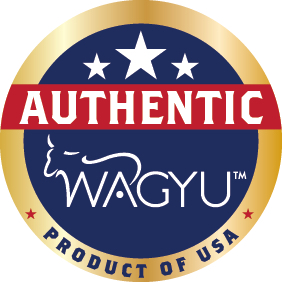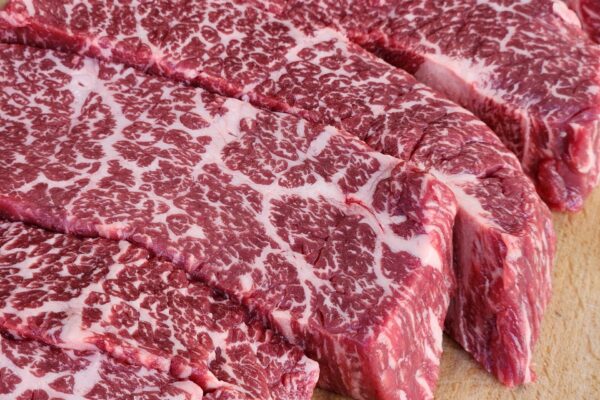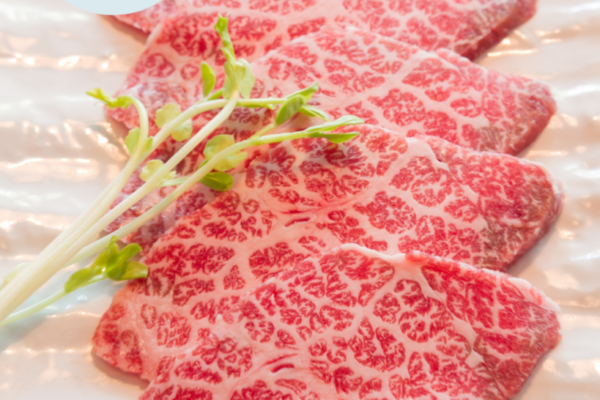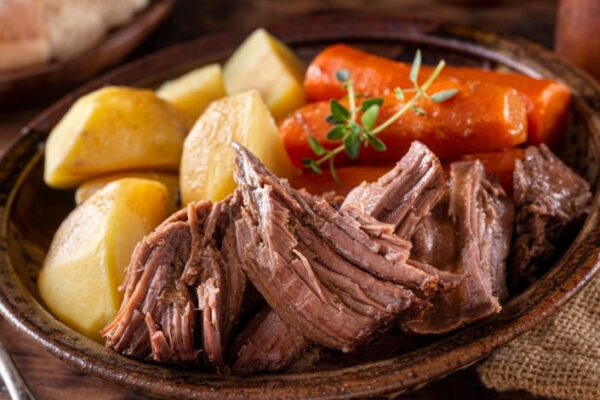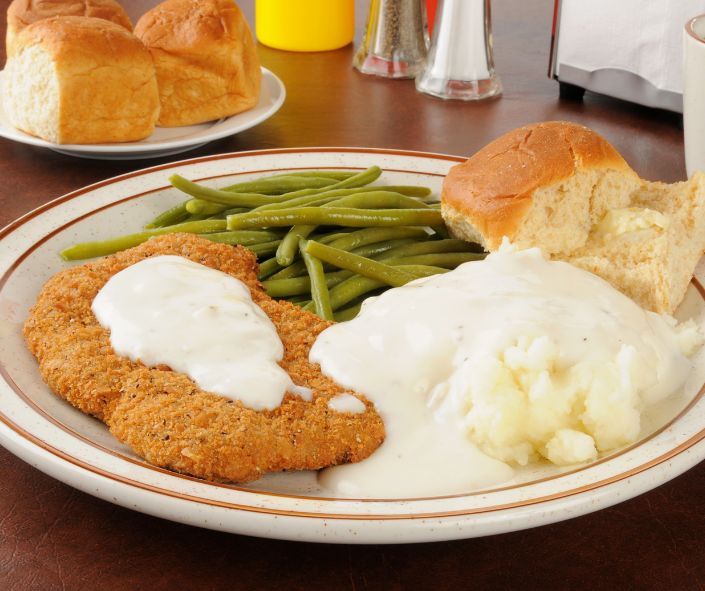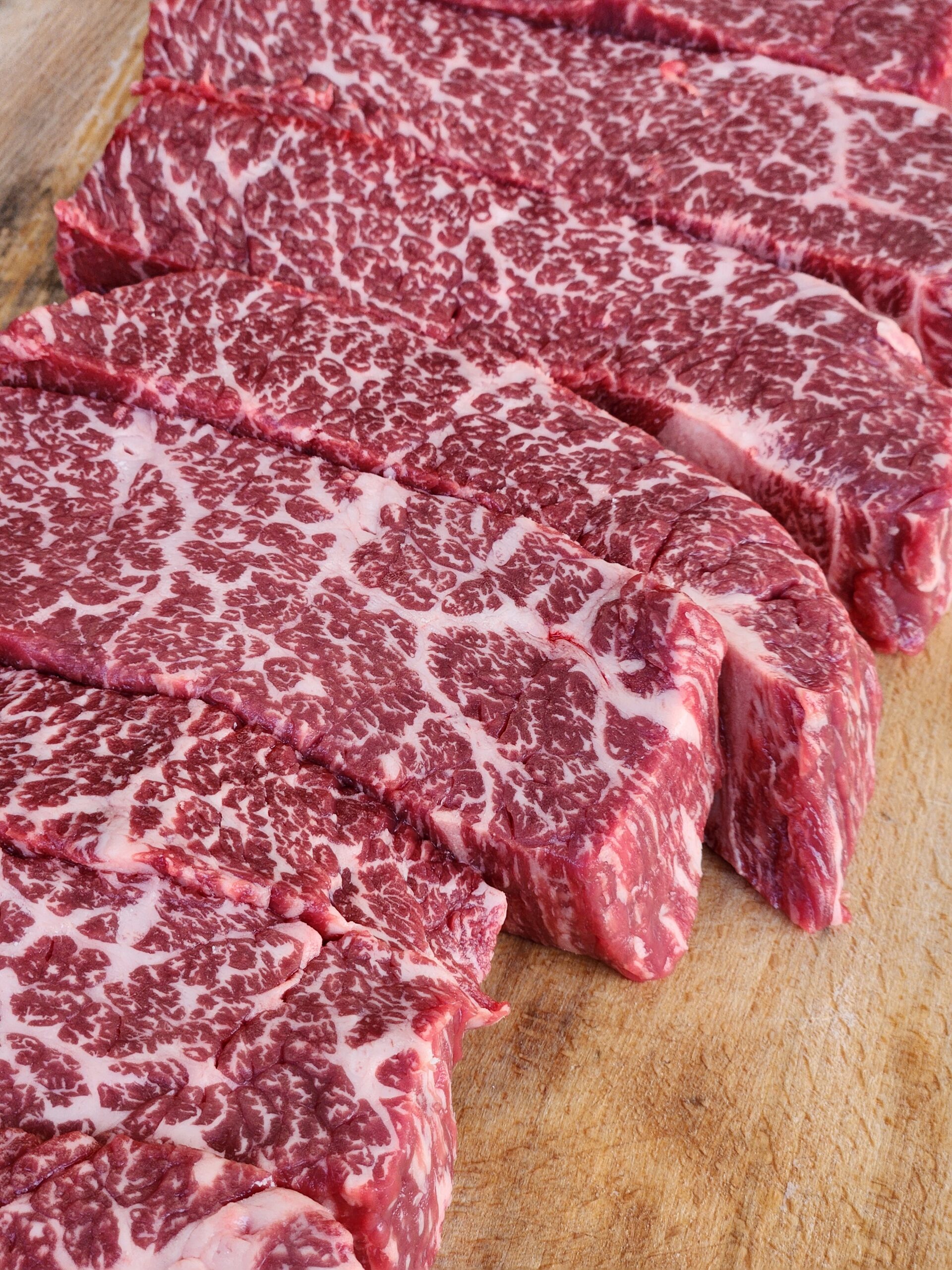
Fullblood Wagyu vs Purebred Wagyu: What It Really Means in American Wagyu | Meat Dudes
If you’ve spent any time exploring the world of Wagyu beef, you’ve probably come across the terms Fullblood wagyu vs Purebred wagyu. And if you’re coming from a traditional cattle background, the use of the word “purebred” might throw you off.
Spoiler: In Wagyu, “purebred” doesn’t mean 100% — and that difference matters more than you might think.
Let’s break it down.
What is Fullblood Wagyu?
When you see Fullblood Wagyu, you’re looking at the top of the genetic chain.
- 100% Wagyu genetics
- Direct traceability to Japanese herdbooks
- No crossbreeding—ever
- DNA-verified and registered with organizations like the American Wagyu Association
- The closest you can get to authentic Japanese Wagyu outside of Japan
This is the gold standard for Wagyu in the U.S., reserved for the most premium breeding and beef programs.
What is Purebred Wagyu?
Purebred Wagyu may sound like it’s 100% Wagyu, but it technically isn’t.
- Contains at least 93.75% Wagyu genetics
- Result of crossbreeding Wagyu (typically bulls) with breeds like Angus in early generations
- Animals are then bred back to Wagyu over several generations to increase genetic percentage
- Still delivers excellent marbling and flavor, but with trace genetic differences
- Much more common in American herds because they’re easier to raise, finish, and scale
Why the Confusion?
In most traditional beef breeds — think Angus, Hereford, etc. — the term “purebred” usually means 100% of the breed’s lineage. So when producers see “Purebred Wagyu,” they assume it’s genetically pure.
But in the Wagyu world, Fullblood is the term used for 100% genetic integrity. “Purebred” became the designation for animals with 93.75% Wagyu genetics or more, due to a very specific reason…
Why “Purebred” Had to Be Redefined for Wagyu
1. Very Limited Imports from Japan
Only a small number of Fullblood Wagyu cattle were ever imported to the U.S. before Japan shut down exports in the late 1990s. With such a tight gene pool, U.S. ranchers needed to crossbreed to build herds.
So they started by:
- Crossing Wagyu bulls with Angus or other local breeds
- Breeding the offspring back to Wagyu over generations
- Once the animals reached 93.75% Wagyu genetics, they could be officially registered as Purebred Wagyu
This was essential for growing the American Wagyu industry while still preserving much of the genetic quality that makes Wagyu special.
2. “Fullblood” Became the New Gold Standard
To protect the integrity of 100% Wagyu genetics, the term Fullblood was created to distinguish these cattle from the more common Purebreds. These animals must be DNA-verified with no crossbreeding in their lineage and trace back to Japanese herdbooks.
Why It Matters
That small 6.25% difference in genetics might not seem like much, but it can make a big impact on:
- Marbling scores
- Meat texture and flavor depth
- Breeding value and consistency
If you’re shopping for Wagyu beef — or looking to understand the value behind different labels — this distinction is critical.
Final Thoughts from The Meat Dudes
So, is Purebred Wagyu still delicious? Hell yes.
But if you’re looking for the truest expression of Japanese Wagyu genetics, Fullblood is where it’s at.
Now you know the difference. And the next time someone throws the term “purebred” around, you’ll be ready to hit them with the facts.
